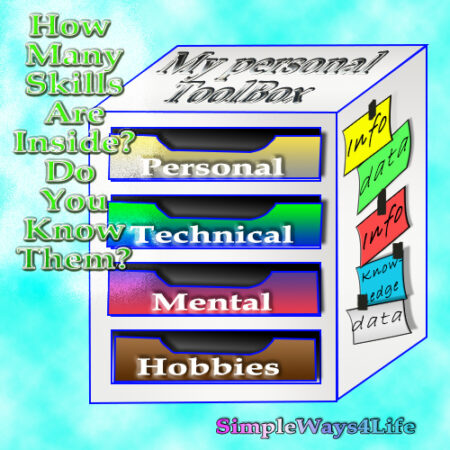One of the problems in the era of big-data is what we are going to do with all the maintenance data we collect? What happens when there is no purpose for data collection? Moreover, What happens when there is no clear use or value added from the data we collect? Simply, we lose our enthusiasm to keep collecting the data.
Why we need mindset preparation prior to data preparation?
So, clarity of the intentions behind collecting the data is a pivot point in the consistency of data collection. These intentions should be made clear to everyone in the process of collecting and preparing the data. When it is a one -man-show; in other words, you collect, prepare, propagate and make use of the data, then you know what you are doing and why. But when there are other team members involved, then they need to have a clear vision of what they are doing, why they are doing it and the value added from this job.

CUSTOMPRICE-TO2JAN26
This means that you need to set an intention to collect the data. Moreover, you need to have a clear purpose for this intention. The intention and the clear purpose behind it act like a recovery point for the track and the enthusiasm to follow on on this track. In short, To set an intention is empowering because it provides you with the choice to make a change where change is needed (Source: Psychology Today). You can follow more on the subject of setting intention in work and how they can add a value to your maintenance career in the following articles:
- Intentions also helps maintenance achievements
- The power of a new startup
- What happens when you have a desire to do things differently?
- Unlock a hidden skill; learn how to drive your mind
- Intend to make use of the data. MS-APR-3
- Subtle heart intentions, the real magical life – Holistic Well-Being
- Is healing Intention only enough? – Holistic Well-Being
Prepare Maintenance Data
Before putting effort to ensure maintenance-data integrity i.e. accuracy, consistency, and reliability of the information stored and managed within the maintenance system, we need to collect proper enough maintenance-data. That’s what we explained thoroughly in this article: The Steps before assurance of maintenance-data integrity – Step A. Then we prepare it for usage. Finally, we use this data to make informative decisions and add value to the team and the organization.

CUSTOMPRICE-TO2JAN26
The entry point to data preparation is where we store the collected data. Storing a properly filtered and serialized data with complete attributes is more than 50% of the data preparation. This happens automatically when we use a digital medium to collect the data like the sensors or digital interfaces on handheld digital devices. This happens on a later stage when we collect data manually as we explained before. After data is collected via pen and paper aka checklists or workorders, one of the team records this data to a digital medium for storage or further analysis.
There is a crucial fork-on-the road here. Will this digital medium that receives the data perform the analysis directly? Or, it will be conveyed to the maintenance system later on?
Your organization may have a full-fledged Computerized Maintenance Management System (CMMS). Or, it may look for simpler tools for reliability data collection without investing a lot. There are several alternatives available. These tools range from basic software applications to manual methods, depending on your specific requirements and the scale of your maintenance operations.
Here are some simpler tools and methods for maintenance data collection & Preparation:
Spreadsheets (e.g., Microsoft Excel, Google Sheets): Spreadsheets are versatile tools that we can use for basic data entry and tracking. You can create custom templates to record information related to equipment, maintenance activities, and failure data. Even more, you can add validation for data entry to ensure that only the correct data enters the spreadsheet

CUSTOMPRICE-TO2JAN26

CUSTOMPRICE-TO2JAN26
Database Software (e.g., Microsoft Access): For organizations comfortable with database management, applications like Microsoft Access can be used to create custom databases for storing and querying maintenance data. This provides more structure than spreadsheets.
Commercial Maintenance Mobile Apps: There are mobile apps designed for simple maintenance tracking. These apps often offer features for recording equipment details, maintenance tasks, and attaching photos. They may not be as comprehensive as a full CMMS but can be a good starting point.
Paper-Based Logs: While manual, paper-based logs may seem old-fashioned, they can be effective for small-scale operations. They seem easier for technicians to manually record maintenance activities, issues, and observations. Properly designed Paper forms make it easy to convey the data to a digital medium for further analysis or even flipping through the papers to collect some data.
Document Management Systems(DMS): Document management is a system or process used to capture, track and store electronic documents such as PDFs, word processing files and digital images of paper-based content. It can save you time and money as it provides document security, access control, centralized storage, audit trails and streamlined search and retrieval. We can use DMS to organize and store maintenance-related documents, such as manuals, maintenance procedures, and inspection records.

CUSTOMPRICE-TO2JAN26
Supporting Tools for Maintenance Data tracking
Part of the process of a full-fledged CMMS is maintenance planning, tracking and creating reminders. So we had seen in the previous section how to collect maintenance data. The following tools might not look maintenance oriented but they can serve maintenance tracking efficiently if used creatively.
Calendar Applications: Calendar applications, such as Google Calendar or Microsoft Outlook, can schedule and track maintenance activities. While not specifically designed for maintenance, they offer a straightforward way to plan tasks and mark task completion.
Task Management Apps: Simple task management applications like Trello or Asana allow basic maintenance tracking. Create boards or projects for different equipment or systems and use task cards to document maintenance activities.
QR Code or Barcode Systems: Implementing a simple QR code or barcode system can facilitate quick CORRECT data entry and retrieval. Technicians can scan codes associated with equipment to access or update maintenance information stored in a central database.
Email Communication: Use email communication to maintain records of maintenance activities. Create a standardized format for technicians to report completed tasks, issues, and observations via email.

CUSTOMPRICE-TO2JAN26
When selecting a simpler tool or method, consider factors such as the complexity of your maintenance needs, the number of assets, the size of your organization, and the technical expertise of your team. While these tools may lack some of the advanced features of a CMMS, they can still provide a structured approach to reliability data collection for smaller or less complex maintenance operations. As your organization grows or your needs become more sophisticated, you can reassess and consider transitioning to a dedicated CMMS
Lastly, Use the Maintenance Data
We are going to cover this deeply in the coming chat. However to sense the purpose of proper data collection and preparation we need to think how we are going to use the data we collected and prepared. We have a basic use within maintenance to take it to the next level and make it more valuable. Then we take this data to an extended use within the organization. The valuable maintenance data after proper recording and analysis will lead to conclusions, actions and performance indicators.

CUSTOMPRICE-TO2JAN26

CUSTOMPRICE-TO2JAN26
In practical terms, this hierarchy there is a progression in the data-to-information-to-knowledge continuum. Data is the foundation, information builds upon it with context, and knowledge results from the application and synthesis of information in meaningful ways.
In conclusion,
Proper maintenance data collection and preparation can help in effective communication and decision-making processes. This will enable us to solve one of the core problems in the era of big-data; What we are going to do with all the maintenance data we collect? If we don’t make a clear intention and added value out of this data, the team – including the team lead- will lose the enthusiasm to keep collecting the data.
If you feel you need help with any of these ideas we discussed, request a Management Consultancy or Coaching Services From our Store










